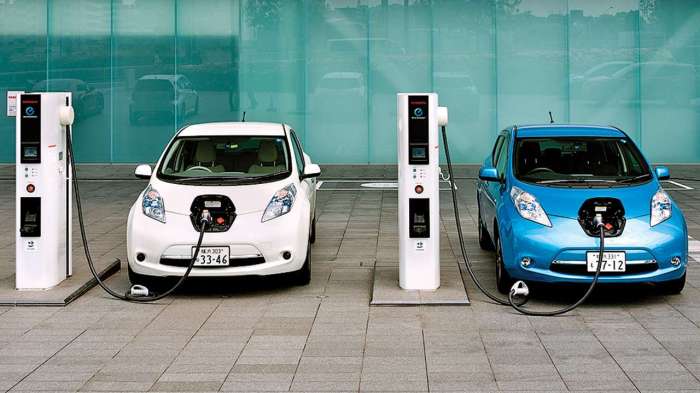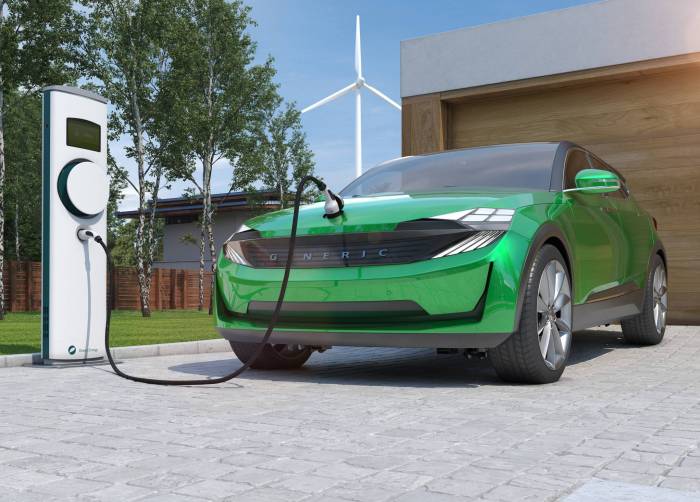Electric vehicles, the epitome of eco-friendly mobility, are revolutionizing the way we travel. From their environmental benefits to the cutting-edge technology behind them, this overview will delve into all things electric vehicles.
Get ready to explore the electrifying world of transportation like never before.
Overview of Electric Vehicles

Electric vehicles, also known as EVs, are vehicles powered by electricity stored in batteries, which eliminates the need for gasoline or diesel fuel. These vehicles are becoming increasingly popular due to their environmental benefits and technological advancements.
Electric vehicles offer numerous environmental benefits, including lower greenhouse gas emissions and reduced air pollution. By replacing traditional internal combustion engines with electric motors, EVs help decrease reliance on fossil fuels and contribute to a cleaner, greener planet.
There are different types of electric vehicles available in the market, ranging from fully electric vehicles (EVs) to plug-in hybrid electric vehicles (PHEVs) and hybrid electric vehicles (HEVs). Each type offers varying levels of electric and gasoline-powered operation, catering to different driving needs and preferences.
When comparing the cost of owning and operating an electric vehicle versus a traditional gasoline-powered vehicle, EVs often come out ahead in terms of long-term savings. While the upfront cost of purchasing an electric vehicle may be higher, the lower maintenance and fuel costs over time can result in significant savings for EV owners.
Technology Behind Electric Vehicles
Electric vehicles (EVs) are powered by advanced technology that includes key components such as the battery, motor, and charging system. These components work together to provide efficient and eco-friendly transportation options.
Battery Technology
The battery is a crucial component of an electric vehicle, storing the energy needed to power the motor. Advances in battery technology have led to the development of lithium-ion batteries, which offer higher energy density and longer driving ranges compared to older battery technologies. These batteries are also more durable and have faster charging capabilities, making them ideal for electric vehicles.
Motor System
The motor in an electric vehicle converts electrical energy from the battery into mechanical energy to drive the vehicle. Electric motors are more efficient than internal combustion engines, providing instant torque for quick acceleration. This efficiency contributes to the overall performance of electric vehicles, making them competitive with traditional vehicles in terms of speed and acceleration.
Charging System
The charging system of an electric vehicle allows the battery to be recharged using a variety of methods, including standard electrical outlets, dedicated charging stations, and fast charging technologies. As the infrastructure for electric vehicle charging continues to expand, the convenience and accessibility of charging an EV have improved significantly.
Regenerative Braking, Electric vehicles
One of the innovative features of electric vehicles is regenerative braking, which captures and stores energy that is typically lost as heat during braking. This energy is then used to recharge the battery, improving the overall efficiency of the vehicle and extending its driving range. Regenerative braking not only enhances the performance of electric vehicles but also reduces wear and tear on the braking system.
Charging Infrastructure

Having a robust charging infrastructure is crucial for the widespread adoption of electric vehicles. It ensures that EV owners have convenient access to charging stations, reducing range anxiety and promoting the transition to cleaner transportation.
Types of Charging Stations
There are three main types of charging stations available:
- Level 1: These chargers use a standard 120-volt household outlet and are suitable for overnight charging at home. They provide a slow charge, typically adding about 2-5 miles of range per hour.
- Level 2: These chargers require a 240-volt outlet and are commonly found in public locations, workplaces, and residential settings. They offer faster charging speeds, adding around 10-60 miles of range per hour.
- DC Fast Charging: Also known as Level 3 chargers, these stations provide rapid charging, adding up to 100 miles of range in as little as 20-30 minutes. They are often located along highways for long-distance travel.
Building a Nationwide Charging Network
One of the challenges associated with building a nationwide charging network is the high upfront costs of infrastructure installation. Additionally, ensuring interoperability among different charging networks and standardizing payment methods are key factors to consider. Cooperation between government agencies, automakers, and charging station providers is essential to overcome these challenges.
Innovative Solutions for Accessibility
Several innovative solutions have been implemented to improve the accessibility of charging stations, such as:
- Installing charging stations in urban areas, parking garages, and shopping centers to increase convenience for EV owners.
- Implementing smart charging technologies that optimize charging schedules based on grid demand and renewable energy availability.
- Integrating charging infrastructure with existing public transportation systems to create multimodal hubs for seamless travel experiences.
Government Policies and Incentives
Government policies play a crucial role in promoting the adoption of electric vehicles. These policies are designed to accelerate the transition to cleaner transportation options and reduce greenhouse gas emissions.
Electric Vehicle Incentives
Many countries offer incentives to consumers to encourage the purchase of electric vehicles. These incentives can include tax credits, rebates, reduced registration fees, and access to carpool lanes.
Subsidies and Tax Credits
Subsidies and tax credits are essential in supporting the growth of the electric vehicle market. These financial incentives help offset the higher upfront cost of electric vehicles, making them more affordable for consumers.
International Approach
Different countries have adopted varying approaches towards the electrification of transportation. Some countries have set ambitious targets for electric vehicle adoption, while others focus on developing charging infrastructure and offering generous incentives to consumers.